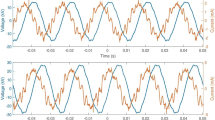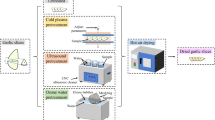Abstract
The specific aim of this work was to study the capability of a carob protein isolate (CPI) to produce self-supporting gels when subjected to a thermal treatment. CPI aqueous dispersions (10, 20 and 30 wt% protein basis) at three different pH values (2, 6 and 10) were subjected to a heating/cooling process (95 °C–30 min/4 °C–24 h) leading to the formation of self-supporting gels. Those gels were characterized for dynamic rheological properties; water holding capacity (WHC); textural properties; extractability in different media; scanning electron microscopy; and SDS-PAGE profiles of the soluble proteins. The results demonstrated that self-supporting CPI gels can only be obtained at concentrations higher than 20 wt%, being favoured at extreme pH values, especially at alkaline pH. At pH 10, gels with higher dynamic elastic and hardness properties and appropriate WHC were formed due to the promotion of disulphide bonds formation. Thus, if higher rheological properties and hardness are required for thermally treated CPI gels, alkaline pH conditions that favour hydrophobic interactions and disulphide bonding should be selected.





Similar content being viewed by others
References
Aguilar JM, Batista AP, Nunes MC, Cordobes F, Raymundo A, Guerrero A (2011) From egg yolk/kappa-Carrageenan dispersions to gel systems: linear viscoelasticity and texture analysis. Food Hydrocoll 25:654–658
Avanza M, Añón MC (2007) Effect of thermal treatment on the proteins of amaranth isolates. J Sci Food Agric 87:616–623
Avanza M, Puppo MC, Añón MC (2005a) Structural characterization of amaranth protein gels. J Food Sci 70(3):E223–E229
Avanza M, Puppo MC, Añón MC (2005b) Rheological characterization of amaranth protein gels. Food Hydrocoll 19:889–898
Barnes HA (2003) A review of the rheology of filled viscoelastic systems. In Rheology reviews (United Kingdom, The British Society of Rheology), pp 1–36
Bengoechea C, Romero A, Villanueva A, Moreno G, Alaiz M, Millán F, Guerrero A, Puppo MC (2008) Composition and structure of carob (Ceratonia siliqua L.) germ proteins. Food Chem 107:675–683
Beveridge T, Ko S (1984) Firmness of heat-induced whole egg coagulum. Poultry Sci 63:1372–1377
Beveridge T, Toma SJ, Nakai S (1974) Determination of SH-groups and SS-groups in some food proteins using Ellman’s reagent. J Food Sci 39:49–51
Bourne M (2002) Food texture and viscosity. Concept and measurement. Academic Press, Elsevier Science, New York
Bradford MM (1976) A rapid and sensitive method for the quantitation of microgram quantities of protein utilizing the principle of protein-dye binding. Anal Biochem 72:248–254
Campbell LJ, Gu X, Dewar SJ, Euston SR (2009) Effects of heat treatment and glucono-delta-lactone-induced acidification on characteristics of soy protein isolate. Food Hydrocoll 23:344–351
CBI Market Intelligence (2015) CBI Product Factsheet: Locust Bean Gum in Europe. The Netherlands
Damodaran S (1985) Estimation of disulfide bonds using 2-nitro-5-thiosulfobenzoic acid: limitations. Anal Biochem 145:200–204
Errington AD, Foegeding EA (1998) Factors determining fracture stress and strain of fine-stranded whey protein gels. J Agric Food Chem 46:2963–2967
Gerrard JA (2002) Protein-protein crosslinking in food: methods, consequences, applications. Trends Food Sci Tech 13:391–399
Handa A, Takahashi K, Kuroda N, Froning GW (1998) Heat-induced egg white gels as affected by pH. J Food Sci 63:403–407
Hayakawa S, Nakai S (1985) Relationships of hydrophobicity and net charge to the solubility of milk and soy proteins. J Food Sci 50:486–491
Ikeda S, Foegeding EA (1999) Dynamic viscoelastic properties of thermally induced whey protein isolate gels with added lecithin. Food Hydrocoll 13:245–254
Jansens KJA, Lagrain B, Brijs K, Goderis B, Smet M, Delcour JA (2013) Impact of acid and alkaline pretreatments on the molecular network of wheat gluten and on the mechanical properties of compression-molded glassy wheat gluten bioplastics. J Agric Food Chem 61:9393–9400
Kehoe JJ, Foegeding EA (2014) The characteristics of heat-induced aggregates formed by mixtures of beta-lactoglobulin and beta-casein. Food Hydrocoll 39:264–271
Laemmli UK (1970) Cleavage of structural proteins during assembly of head of bacteriophage-T4. Nature 227:680
Manoj P, Kasapis S, Hember MWN (1997) Sequence-dependent kinetic trapping of biphasic structures in maltodextrin-whey protein gels. Carbohyd Polym 32:141–153
Matthews BW (2001) Hydrophobic Interactions in Proteins. In eLS. Wiley, Chichester, pp 1–6
Nunes MC, Batista P, Raymundo A, Alves MM, Sousa I (2003) Vegetable proteins and milk puddings. Colloid Surf B 31:21–29
Plaut M, Zelbuch B, Guggenbheim K (1953) Nutritive and baking properties of carob germ flour. Bull Res Counc Isr 3:3
Puppo MC, Añon MC (1998a) Effect of pH and protein concentration on rheological behavior of acidic soybean protein gels. J Agric Food Chem 46:3039–3046
Puppo MC, Añon MC (1998b) Structural properties of heat-induced soy protein gels as affected by ionic strength and pH. J Agric Food Chem 46:3583–3589
Puppo MC, Añon MC (1999) Rheological properties of acidic soybean protein gels: salt addition effect. Food Hydrocoll 13:167–176
Puppo MC, Lupano CE, Anon MC (1995) Gelation of soybean protein isolates in acidic conditions—effect of pH and protein-concentration. J Agric Food Chem 43:2356–2361
Quéguiner C, Dumay E, Cavalier C, Cheftel J (1989) Reduction of Streptococcus thermophilus in a whey protein isolate by low moisture extrusion cooking without loss of funcional properties. Int J Food Sci Technol 24:601–612
Rafe A, Razavi SMA (2013) The effect of pH and calcium ion on rheological behaviour of β-lactoglobulin-basil seed gum mixed gels. Int J Food Sci Tech 48:1924–1931
Rafe A, Razavi SMA, Khan S (2012) Rheological and structural properties of beta-lactoglobulin and basil seed gum mixture: effect of heating rate. Food Res Int 49:32–38
Renkema JMS, van Vliet T (2002) Heat-induced gel formation by soy proteins at neutral pH. J Agric Food Chem 50:1569–1573
Renkema JMS, Lakemond CMM, de Jongh HHJ, Gruppen H, van Vliet T (2000) The effect of pH on heat denaturation and gel forming properties of soy proteins. J Biotechnol 79:223–230
Romero A, Bengoechea C, Cordobés F, Guerrero A (2009a) Application of thermal treatments to enhance gel strength and stability of highly concentrated crayfish-based emulsions. Food Hydrocoll 23:2346–2353
Romero A, Cordobes F, Puppo MC, Villanueva A, Pedroche J, Guerrero A (2009b) Linear viscoelasticity and microstructure of heat-induced crayfish protein isolate gels. Food Hydrocoll 23:964–972
Shevkani K, Singh N, Kaur A, Chand Rana J (2015) Structural and functional characterization of kidney bean and field pea protein isolates: a comparative study. Food Hydrocoll 43:679–689
Shimada K, Cheftel JC (1988) Texture characteristics, protein solubility, and sulfhydryl-group disulfide bond contents of heat-induced gels of whey-protein isolate. J Agric Food Chem 36:1018–1025
Thannhauser TW, Konishi Y, Scheraga HA (1984) Sensitive quantitative analysis of disulfide bonds in polypeptides and proteins. Anal Biochem 138:181–188
Tsatsaragkou K, Gounaropoulos G, Mandala I (2014) Development of gluten free bread containing carob flour and resistant starch. LWT-Food Sci Technol 58:124–129
Uruakpa FO, Arntfield SD (2005) The physico-chemical properties of commercial canola protein isolate-guar gum gels. Int J Food Sci Tech 40:643–653
Wang YL, Belton PS, Bridon H, Garanger E, Wellner N, Parker ML, Grant A, Feillet P, Noel TR (2001) Physicochemical studies of caroubin: a gluten-like protein. J Agric Food Chem 49:3414–3419
Wu C, Yuan C, Chen S, Liu D, Ye X, Hu Y (2015) The effect of curdlan on the rheological properties of restructured ribbonfish (Trichiurus spp.) meat gel. Food Chem 179:222–231
Zárate LS, Bengoechea C, Cordobés F, Guerrero A (2010) Linear viscoelasticity of carob protein isolate/locust bean gum blends. J Food Eng 100:435–445
Acknowledgements
The authors gratefully acknowledge the financial support from the Ministerio de Investigación, Desarrollo e Innovación of Spain under the project AGL2007-65709 and José Castillejo Mobility Program (JC2007-00047).
Author information
Authors and Affiliations
Corresponding author
Rights and permissions
About this article
Cite this article
Bengoechea, C., Ortiz, S.E.M., Guerrero, A. et al. Effect of pH on the thermal gelation of carob protein isolate. J Food Sci Technol 54, 153–163 (2017). https://doi.org/10.1007/s13197-016-2447-x
Revised:
Accepted:
Published:
Issue Date:
DOI: https://doi.org/10.1007/s13197-016-2447-x




